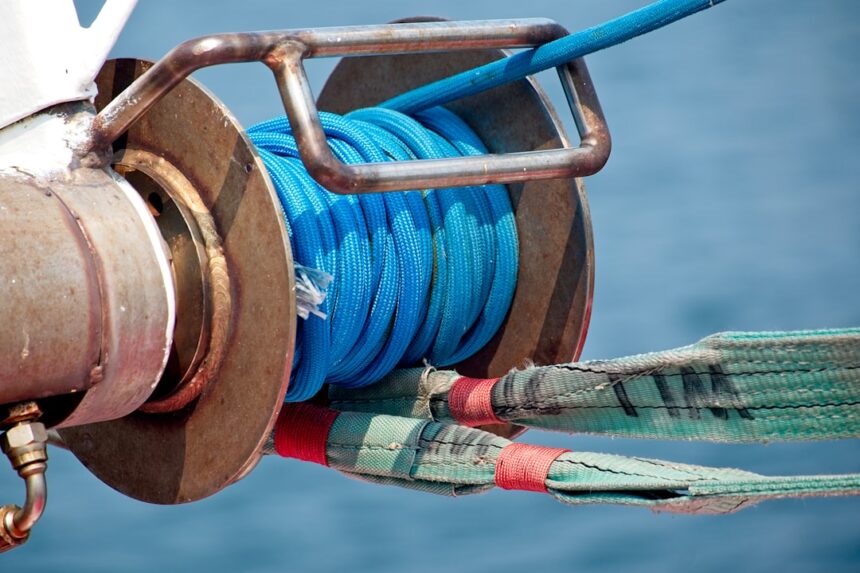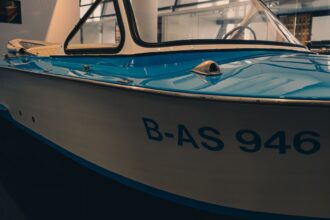Subsea cables and pipelines play a pivotal role in the global economy, serving as the backbone for international communication and energy transport. These intricate networks facilitate the transfer of vast amounts of data across continents, enabling everything from everyday internet usage to critical financial transactions. In addition to data transmission, subsea pipelines are essential for transporting oil, natural gas, and other resources, connecting producers to consumers across oceans.
The significance of these infrastructures cannot be overstated; they are vital for maintaining the flow of information and energy that modern society relies upon. Moreover, the strategic importance of subsea cables and pipelines extends beyond mere functionality. They are often considered critical infrastructure, with their integrity directly impacting national security and economic stability.
Disruptions to these systems can lead to significant financial losses, hinder communication capabilities, and even create geopolitical tensions. As such, safeguarding these underwater assets is not only a matter of operational efficiency but also a crucial aspect of national and international security strategies.
Key Takeaways
- Subsea cables and pipelines are crucial for global communication and energy transportation, making their protection and maintenance essential.
- Risks and threats to subsea cables and pipelines include natural disasters, human activities, and marine life interference, which can lead to costly damages and disruptions.
- Regulations and standards play a key role in safeguarding subsea cables and pipelines, ensuring compliance with safety and environmental requirements.
- Advanced technology and tools such as remote monitoring systems and underwater drones are used for efficient maintenance and early detection of potential issues.
- Physical protection measures like burial, concrete mattresses, and rock placement help to safeguard subsea cables and pipelines from external threats and damage.
Understanding the Risks and Threats
The risks associated with subsea cables and pipelines are multifaceted, encompassing both natural and human-induced threats. Natural hazards such as earthquakes, underwater landslides, and extreme weather conditions can cause significant damage to these infrastructures. For instance, seismic activity can lead to shifts in the seabed that may rupture pipelines or sever cables, resulting in costly repairs and service interruptions.
Additionally, marine life can inadvertently damage these installations through their natural behaviors, such as burrowing or nesting. Human-induced threats present another layer of complexity. Fishing activities, shipping traffic, and even deliberate acts of sabotage can pose serious risks to subsea cables and pipelines.
Fishing vessels often use heavy equipment that can inadvertently drag across the seabed, damaging or severing cables and pipelines. Furthermore, geopolitical tensions can lead to targeted attacks on these infrastructures, making them vulnerable to sabotage or terrorism. Understanding these risks is essential for developing effective strategies to protect subsea assets from potential threats.
Regulations and Standards for Safeguarding Subsea Cables and Pipelines

To mitigate the risks associated with subsea cables and pipelines, a robust framework of regulations and standards has been established at both national and international levels. These regulations are designed to ensure that operators adhere to best practices in the design, installation, and maintenance of subsea infrastructures. Organizations such as the International Telecommunication Union (ITU) and the International Maritime Organization (IMO) play crucial roles in setting these standards, which are aimed at minimizing environmental impacts while enhancing safety and security.
Compliance with these regulations is not merely a legal obligation; it is also a critical component of risk management. Operators must conduct thorough risk assessments and implement appropriate measures to safeguard their assets. This includes adhering to guidelines for cable burial depths, pipeline materials, and monitoring systems.
By following established standards, operators can significantly reduce the likelihood of incidents that could disrupt services or harm the environment.
Technology and Tools for Monitoring and Maintenance
| Technology/Tool | Purpose | Features |
|---|---|---|
| Network Monitoring Software | Monitor network performance and detect issues | Real-time alerts, traffic analysis, performance metrics |
| Server Monitoring Tools | Monitor server health and performance | Resource usage tracking, uptime monitoring, automated alerts |
| Application Performance Management (APM) Tools | Monitor and optimize application performance | Code-level visibility, user experience monitoring, error detection |
| Asset Management Software | Track and manage IT assets | Inventory management, software license tracking, asset lifecycle management |
| Remote Monitoring and Management (RMM) Tools | Monitor and manage IT systems remotely | Remote access, patch management, automated maintenance tasks |
Advancements in technology have revolutionized the monitoring and maintenance of subsea cables and pipelines. Innovative tools such as remotely operated vehicles (ROVs), autonomous underwater vehicles (AUVs), and advanced sensor systems enable operators to conduct real-time inspections and assessments of their infrastructures. These technologies allow for the detection of potential issues before they escalate into significant problems, thereby enhancing the overall reliability of subsea systems.
In addition to inspection technologies, predictive maintenance tools have emerged as game-changers in the industry. By utilizing data analytics and machine learning algorithms, operators can analyze historical performance data to predict when maintenance is required. This proactive approach not only reduces downtime but also extends the lifespan of subsea assets.
As technology continues to evolve, the ability to monitor and maintain subsea cables and pipelines will become increasingly sophisticated, further enhancing their resilience against potential threats.
Physical Protection Measures for Subsea Cables and Pipelines
Physical protection measures are essential for safeguarding subsea cables and pipelines from both natural hazards and human activities.
The depth at which these assets are buried is determined by various factors, including seabed conditions and local maritime traffic patterns.
In some cases, protective coverings or armoring may be employed to provide additional resilience against external forces. In addition to burial techniques, operators often implement surveillance systems to monitor their subsea assets continuously. This may include deploying underwater cameras or utilizing sonar technology to detect any unusual activity in the vicinity of cables and pipelines.
By combining physical protection measures with advanced monitoring systems, operators can create a comprehensive defense strategy that minimizes risks while ensuring the integrity of their infrastructures.
Best Practices for Installation and Maintenance

The installation and maintenance of subsea cables and pipelines require meticulous planning and execution to ensure long-term reliability. Best practices in this field emphasize thorough site assessments prior to installation, which involve evaluating seabed conditions, potential hazards, and environmental impacts. Engaging with local stakeholders during this phase is also crucial for understanding any unique challenges that may arise.
Once installed, regular maintenance is vital for preserving the integrity of subsea assets. Operators should establish a routine inspection schedule that incorporates both visual assessments and advanced monitoring technologies. Additionally, maintaining open lines of communication with relevant authorities and stakeholders can facilitate timely responses to any emerging issues.
Environmental Considerations for Subsea Cables and Pipelines
Environmental considerations are paramount when it comes to the installation and operation of subsea cables and pipelines. The potential impact on marine ecosystems must be carefully evaluated during the planning stages to minimize disruption to local habitats. This includes conducting environmental impact assessments (EIAs) that analyze how installation activities may affect marine life, water quality, and sediment movement.
Furthermore, operators are increasingly adopting environmentally friendly practices throughout the lifecycle of subsea projects. This may involve using biodegradable materials for cable insulation or implementing measures to reduce noise pollution during installation activities. By prioritizing environmental stewardship, operators not only comply with regulations but also contribute positively to the sustainability of marine ecosystems.
Collaboration and Communication Among Stakeholders
Effective collaboration among stakeholders is essential for ensuring the safety and security of subsea cables and pipelines. This includes not only operators but also government agencies, environmental organizations, maritime authorities, and local communities. Establishing clear lines of communication among these groups fosters a shared understanding of risks and challenges while promoting coordinated responses to incidents.
Regular stakeholder meetings can facilitate knowledge sharing about best practices, emerging technologies, and regulatory changes. Additionally, collaborative efforts can lead to joint initiatives aimed at enhancing the resilience of subsea infrastructures against potential threats. By working together, stakeholders can create a more robust framework for safeguarding subsea cables and pipelines while addressing the diverse interests involved.
Emergency Response and Contingency Planning
In an era where disruptions can have far-reaching consequences, having a well-defined emergency response plan is critical for operators of subsea cables and pipelines. Such plans should outline procedures for addressing various scenarios, including natural disasters, equipment failures, or security breaches. Regular drills and simulations can help ensure that all personnel are familiar with their roles during an emergency.
Contingency planning also involves establishing partnerships with local authorities and emergency services to facilitate rapid response efforts in case of an incident. This collaborative approach ensures that resources are mobilized quickly, minimizing downtime and mitigating potential impacts on services. By prioritizing emergency preparedness, operators can enhance their resilience against unforeseen events while safeguarding their subsea assets.
Case Studies and Lessons Learned
Examining case studies of past incidents involving subsea cables and pipelines provides valuable insights into effective risk management strategies. For instance, incidents involving cable damage due to fishing activities have prompted operators to advocate for better awareness among fishermen regarding cable locations. Similarly, past pipeline ruptures have led to improved monitoring technologies that allow for real-time detection of leaks.
These lessons learned underscore the importance of continuous improvement in safeguarding practices. By analyzing past failures or successes, operators can refine their strategies to enhance resilience against future threats. Furthermore, sharing these insights within the industry fosters a culture of learning that benefits all stakeholders involved in subsea operations.
The Future of Safeguarding Subsea Cables and Pipelines
As technology continues to advance at an unprecedented pace, the future of safeguarding subsea cables and pipelines looks promising yet challenging. Innovations such as artificial intelligence (AI) and machine learning will likely play a significant role in enhancing monitoring capabilities while improving predictive maintenance strategies. Additionally, advancements in materials science may lead to more durable cables and pipelines that can withstand harsh underwater conditions.
However, as reliance on these infrastructures grows alongside increasing global connectivity demands, so too do the risks associated with them. Cybersecurity threats targeting data transmission networks will require heightened vigilance from operators as they seek to protect sensitive information from malicious actors. The future will necessitate a holistic approach that combines technological advancements with robust regulatory frameworks while fostering collaboration among all stakeholders involved in safeguarding subsea cables and pipelines.
In conclusion, safeguarding subsea cables and pipelines is a multifaceted endeavor that requires a comprehensive understanding of risks, adherence to regulations, effective use of technology, physical protection measures, best practices in installation and maintenance, environmental considerations, collaboration among stakeholders, emergency preparedness planning, lessons learned from past incidents, and an eye toward future innovations. As global reliance on these critical infrastructures continues to grow, so too must efforts to protect them from an ever-evolving landscape of threats.
In the realm of safeguarding critical infrastructure, the protection of subsea cables and pipelines is paramount due to their vital role in global communications and energy transport. An insightful article that delves into strategies for securing these underwater assets can be found on the In The War Room website. This piece explores various technological and regulatory measures that can be implemented to enhance the resilience of subsea networks against both natural and human-induced threats. For a comprehensive understanding of these protective strategies, you can read more in the related article by visiting this link.
WATCH THIS! The FSB’s Hidden War on Europe’s Pipelines
FAQs
What are subsea cables and pipelines?
Subsea cables and pipelines are essential infrastructure for the transportation of energy resources, such as oil and gas, and for the transmission of telecommunications and internet data. They are laid on the seabed and are crucial for global connectivity and energy supply.
Why is it important to protect subsea cables and pipelines?
Protecting subsea cables and pipelines is crucial to ensure the uninterrupted flow of energy resources and data transmission. Damage to these infrastructure can result in significant economic and environmental consequences, as well as disrupt global communication and energy supply.
What are the common threats to subsea cables and pipelines?
Common threats to subsea cables and pipelines include natural disasters such as earthquakes and tsunamis, human activities such as fishing and anchoring, and marine life such as coral and marine growth. Additionally, accidental damage from ship anchors and construction activities can also pose a threat.
How can subsea cables and pipelines be protected?
Subsea cables and pipelines can be protected through various methods such as burying them under the seabed, using protective coatings and materials, implementing monitoring and surveillance systems, and establishing exclusion zones to prevent human activities that may damage the infrastructure.
What are the regulations and standards for protecting subsea cables and pipelines?
There are international regulations and standards, such as the United Nations Convention on the Law of the Sea (UNCLOS) and the International Cable Protection Committee (ICPC) guidelines, that govern the protection of subsea cables and pipelines. Additionally, individual countries may have their own regulations and standards for protecting these infrastructure within their territorial waters.




